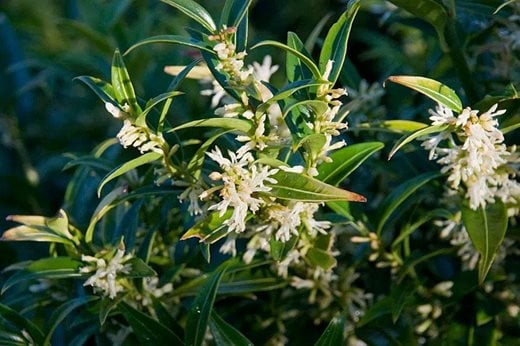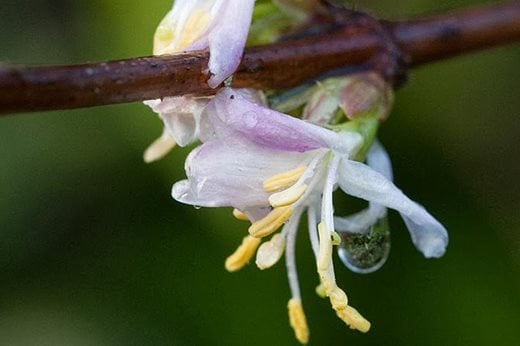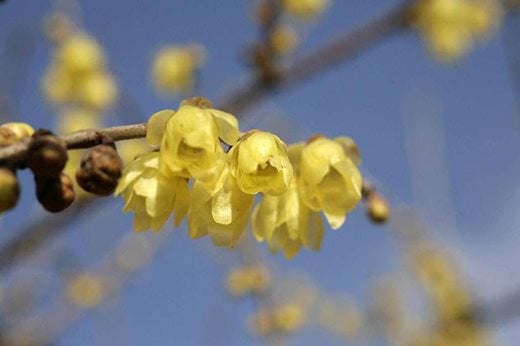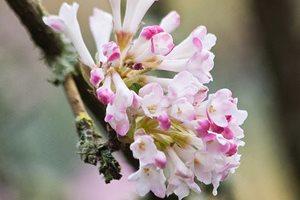That precious combination of colour and fragrance is all the more valuable in winter when we all need a lift, and there are some superb shrubs to remind us that winter is not all about endless rain or scraping ice off the car
 Sarcococca (Christmas box)
Sarcococca (Christmas box)
Sarcococcas, sometimes known as sweet or Christmas box, are easy evergreens with glossy pointed foliage. The blooms of some, such as the white-flowered S. confusa, tend to be hidden amongst the leaves - but their scent is unmissable and often the first sign of flowering isthe scent wafting around the garden.
S. confusa is the most widely grown, and the tallest at about 2m (6½ft), but two shorter cultivars which are less often seen are well-worth seeking out. Sarcococca hookeriana var. digyna ‘Purple Stem’ also has white flowers, tinted pink, and the stems as well as the midribs of the leaves are flushed purple. And it reaches only 60cm (2ft). In between the two, at 1.2m (4ft), is the more recently-arrived S. ruscifolia ‘Dragon Gate’ (above). This has its white flowers more tightly packed on the stem than others and has smaller leaves, so the flowers are less hidden. ‘Dragon Gate’ also features red berries, while those of S. confusa and ‘Purple Stem’ are black.
 Lonicera (scented bushy honeysuckles)
Lonicera (scented bushy honeysuckles)
The scented bushy honeysuckles are well known - but again there’s one to look out for that should be grown more widely.
Lonicera standishii var. lancifolia 'Budapest’ not only has attractively pink-tinted flowers, strongly scented of course, but the new shoots on the 2m (6½ft) plants are coppery bronze in colour, providing a beautiful spring spectacle. Easily grown and tolerant of many conditions, although best against a wall in cold areas.
 Chimonanthus praecox (wintersweet)
Chimonanthus praecox (wintersweet)
Wintersweet, is well known for its winter fragrance and the clear yellow bells of ‘Luteus’ (see photo) or the red-marked form, ‘Grandiflorus’, are often seen. But look out for ‘Trenython’ which has creamy, almost white, flowers brightly marked in red and an unusually powerful scent.
 Viburnum × bodnantense (winter-flowering viburnum)
Viburnum × bodnantense (winter-flowering viburnum)
Viburnum × bodnantense is widely grown but it’s almost always the variety, ‘Dawn’, that’s seen. This is a good plant, but ‘Charles Lamont’ (see photo) has flowers in a brighter shade of pink and more of them. The fragrant flowers are borne intermittently from early winter into spring.
-940x627.jpg?width=520&height=344) Hamamelis (witch hazels)
Hamamelis (witch hazels)
Finally, the indispensible witch hazels – Hamamelis. This is a case where choosing the right variety is crucial as while many are very brightly colourful, not all are scented. And a word of warning: H. × intermedia 'Pallida' is the best known and always recommended, and if you’re sold the right plant the colour and scent are marvellous. But there are impostors being sold under that name which have no scent, so either shop at a specialist, or choose another.
Amongst the many others, these all combine colour with unusually strong fragrance: ‘Angelly’ (pale yellow), ‘Arnold Promise’ (lemon), ‘Aurora’ (yellow and red), ‘Imperialis’ (pale yellow), ‘Jermyn’s Gold’ (gold), ‘Vesna’ (pale orange) and ‘Wisley Supreme’ (pale yellow). But these all make substantial plants as the years go by and so a choice must be made – few gardens have space for more than one or two.
My choice? ‘Arnold Promise’ is unusually prolific, ‘Vesna’ (see photo) is upright so good in small spaces; both have unusually fiery autumn colour.

